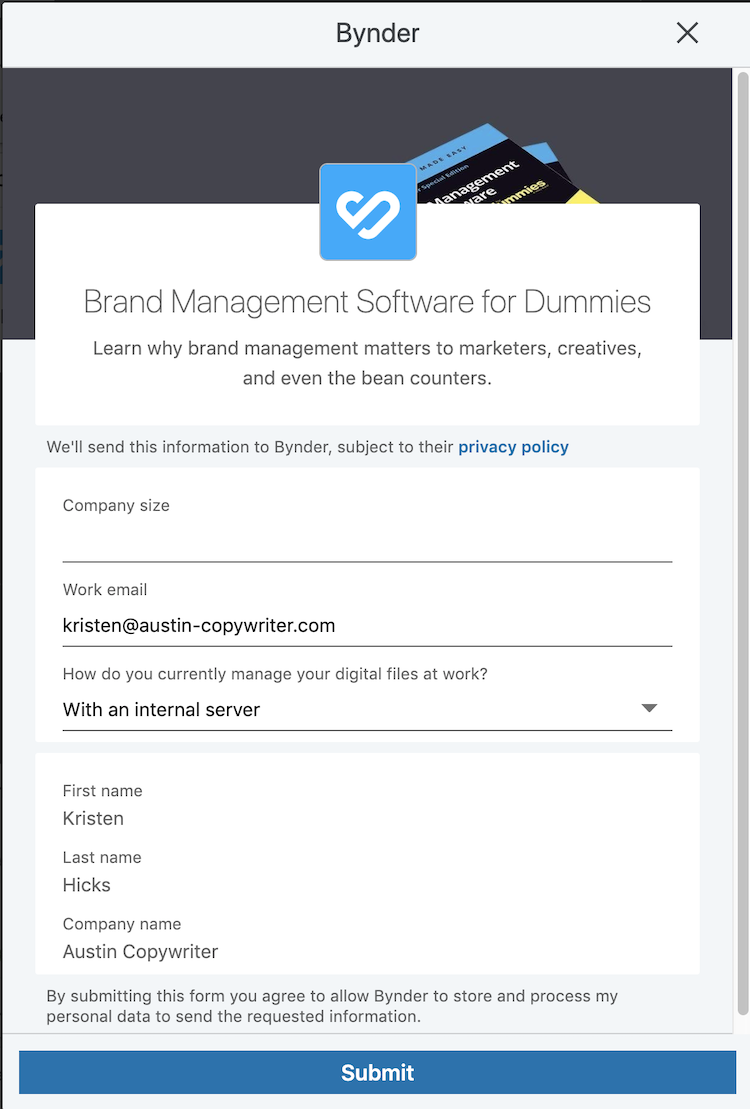
Top 10 Paid Media and PPC Lead Generation Strategies

Every B2B marketing funnel starts with leads. Before you can convince customers you’re the best choice for their business, you have to get their attention and convince them it’s worth learning more about you. For everything else in your marketing strategy to work, you need to get lead generation right.
A number of different channels can be put to use for gaining new leads, but one of the best tools in your arsenal is PPC (pay-per-click) lead generation.
Why You Should Use PPC for Lead Generation
Using PPC for lead generation offers a few notable benefits.
PPC ads are targeted.
A good lead generation strategy must prioritize lead quality, as well as lead quantity. In comparison to other online marketing channels, PPC gives you more control over who you reach. For both search and social PPC, you can set up ad targeting based on demographics, geography and behavioral data. Those targeting options make it easier not only to reach more people, but to reach the specific people most likely to buy from your brand.
PPC offers a solid ROI.
If there’s one reason businesses hesitate to invest in PPC, it’s because you have to pay for the traffic you get from it. Where search engine optimization (SEO) and social media marketing are technically free (although they get costly once you factor in time and labor costs), PPC costs money. Yet that investment produces an impressive ROI. Google estimates that advertisers make an average of eight times back the amount that they spend.
Results are faster than with SEO.
While SEO can deliver big results over time, PPC has the distinct benefit of helping you get relevant traffic right away. You don’t have to wait months or years for your campaigns to start paying off. As long as your ads and landing pages are strong, you’ll start getting leads on the day you launch your first PPC campaign.
You’ll meet your audience where they are.
At more than 3.5 billion searches every day, Google is widely regarded as the go-to resource for just about any question or need a person has. And in the U.S., a majority of the population (across all age groups) is on social media, with most people visiting at least one social media site daily. Between social media websites, search engines and the millions of websites on the Google Display Network, you can reach pretty much anybody with internet access using PPC ads.
You’ll know where your leads are coming from.
PPC platforms provide extensive data on how campaigns perform. PPC analytics will help you understand who your audience is and what they respond to. You can not only use that information to improve the results of your PPC campaigns, but also apply it to the rest of your online marketing efforts. And being able to show direct evidence of your success with hard data makes it easier to convince the C-suite of the value marketing provides.
10 PPC Lead Generation Strategies
To get a high number of quality, relevant leads from PPC, there are a few best practices to use.
1. Go where your audience is.
Much of PPC’s power for lead generation lies in its expansive reach. But you don’t need to reach everyone with your ads. And when you pay for every click, you definitely don’t want to reach everyone. You want to get your ads in front of the people in your target audience specifically.
The first step to doing that with PPC is figuring out who your audience is, and then analyzing where they hang out online. Ads on the Google search engine results page (SERP) are likely to be valuable for most brands as almost everybody uses Google. But you can limit the types of sites you show up on in the display network based on what your audience likes, and choose which social media sites to prioritize based on how your audience uses them.
Do audience research to understand what websites and channels make the most sense for your PPC campaigns.
2. Set up proper tracking.
If there’s a secret to PPC success, it’s data. Every campaign you run produces data you can use to make your next campaign deliver even better results. In addition to the analytics PPC ad platforms automatically provide, you can get additional information by setting up more detailed tracking for your campaigns.
A couple of options you have for doing that are:
- UTM tracking - UTM tracking codes are extra characters you can add to your URLs to track the success of different tactics and campaigns in more detail. Each time you create a PPC ad, create a unique URL with the proper UTM codes to identify the link based on the campaign it’s a part of, the site it’s showing up on, the channel, the type of content it is, and keyword you’re targeting.
- Dynamic number insertion (DNI) - When a phone call is one of the goals of a PPC ad, you need a way to connect the calls you get back to the ad. DNI providers like CallRail automatically generate a unique phone number for different campaigns, so you can track which ad inspired a particular call.
- Conversion tracking - Measure how ad clicks lead to activity on your website — e.g., form submissions, phone calls, sign-ups and purchases. The global site tag is placed in the header across your website. Event snippets are used to track conversions on specific pages.
 The right tracking, combined with a customer relationship management (CRM) tool like HubSpot, will help you make the right connections between your PPC ads and eventual purchases.
The right tracking, combined with a customer relationship management (CRM) tool like HubSpot, will help you make the right connections between your PPC ads and eventual purchases.
3. Get specific in your campaigns and ad groups.
We’ve already established that PPC ads allow you to limit who sees your ads to just those people in your target audience. Many brands have multiple audiences who may have multiple priorities each. You can increase your PPC success by using ad groups to closely target each ad to the right person at the right moment to increase relevance.
We recommend segmenting each of your campaigns based on:
- Brand/Competitors
- Product/Service
- Geographic Location
- Target Industry
Getting really specific in your ad groups gives you the power to bring extreme relevance to the keywords you target, ad copy you write and landing pages you design. Relevance leads to higher click-through rates and conversions.
4. Create unique landing pages for each ad group.
You want to create persuasive ads that get people to click, but it’s even more important the information they find after they click matches what they’re looking for. You’re paying for that click one way or another, so make sure it counts.
Design landing pages for each ad that delivers on the ad’s promise. Make sure they’re relevant to the campaign’s keyword and the audience you’re targeting, and design each landing page for the conversion you’re aiming for. That means minimizing any distractions so the page is focused on the specific action you want the visitor to take next.
Additionally, Google has begun to prefer long-form content landing pages, as opposed to concise, short landing pages. Landing pages for PPC should now include:
- At least 500-600 words
- Contain the keyword in the header, title and throughout the copy multiple times
- Paragraph description of the company and any important policies (e.g., warranties, return policies, etc.)
- Trust symbols and trust text (meaning descriptions of why the user should trust the client)
Bonus items to include are testimonials and a description of what will happen for the consumer after they submit the form.
5. Put your form in the ad.
With Facebook and LinkedIn, you can include a form within the ad itself, giving your audience the option to convert without having to leave the page they’re on. LinkedIn will even automatically fill in the form based on the information they already know about the person, making the step of becoming a lead that much easier. This type of ad reduces friction by making the step of providing information simpler, which can increase the number of leads.

6. Make compelling offers.
Figure out a persuasive offer that will make the click worth your lead’s while. This is especially useful for competitive keywords and placements where getting someone to choose your ad over another is challenging. Promote a free trial, free consultation or attractive discount to incentivize them to choose your ad.

7. Target keywords with purchase intent.
A strong PPC strategy usually includes targeting a variety of keywords your audience will be searching at different points in the buyer’s journey. When it comes to using PPC for lead generation though, you want to think specifically about what they’ll be searching when they’re close to the point of buying.
For a company that sells HR software, someone searching for “HR software pricing” is probably pretty close to the point of buying. Figure out which of your keywords show a high purchase intent, and prioritize them in your PPC lead generation campaigns.
8. Use negative keywords.
Finding the right keywords to target is a crucial step in any PPC campaign, but it’s just as important to figure out what keywords to exclude so you don’t waste money on clicks that aren’t relevant to your goals.
That often includes keywords like free and cheap, since you’re looking for paying customers (unless you’re promoting a freemium tool or a free trial as a way to gain leads). It can also include keywords that suggest someone is looking for a synonym of what you offer, as with someone who sells computers wanting to eliminate traffic coming from people looking for the social use of PC (politically correct) rather than the tech one (personal computer).
You can start out by brainstorming negative keywords, but you’ll also likely identify a number you missed by analyzing the results of your campaigns over time and identifying the irrelevant traffic your ads bring in.
9. Use ad extensions.
Ad extensions are a way to include valuable information in your Google PPC ads in a format that stands out. Ad extensions show up as a unique link or section of your ad. They make it easier to highlight the specific parts of the ad a lead may be interested in, such as the link to sign up for a free trial, a special offer, or the phone number you want them to call.
Ad extensions can help your ad stand out from others on the SERP, and draw a lead’s attention to the main actions you want them to take.
10. Test and analyze.
Every business is different and you can’t base your own PPC strategy on what worked for someone else. You have to learn what works for your audience specifically. The only way to do that is to continually monitor your ads, analyze the results and apply what you’ve learned to your campaigns.
PPC is a good format for A/B testing to gain a clear understanding of what your audience responds to. You can test out many different aspects of your ads, including:
- Ad copy
- Images
- Headlines
- Keywords
- Offers
- Extensions
- Times of day (using ad scheduling)
- Audience targeting
- Form fields and design
Your PPC campaigns make it easy to put different versions of ads side by side to see how they compare. Much of the testing you do using PPC can help you improve other areas of your marketing. The headline that works best in a PPC campaign will probably work better as an email subject line, as well. The keywords that deliver the best-converting traffic in your PPC campaigns should be prioritized in your SEO efforts.
PPC is useful for lead generation, but the value you get from a PPC lead generation campaign goes beyond the leads themselves.
Turn Leads Into Customers
PPC can send more leads your way, but then it’s up to you to nurture those leads and turn them into customers. A good lead generation campaign has to include a followup strategy for moving those leads through the funnel.
Treat lead generation as one part of a full inbound marketing strategy that incorporates content marketing, email and social media. You want to keep the relationships that start with a PPC ad alive past that initial encounter and put them on the path to purchase.




